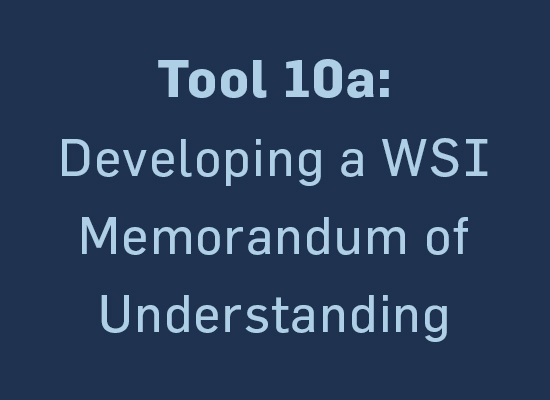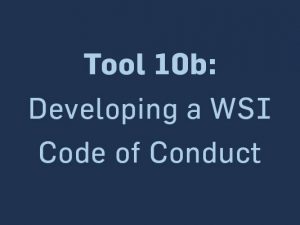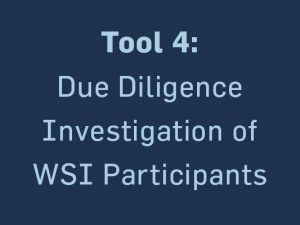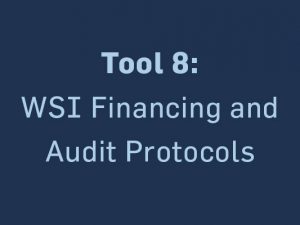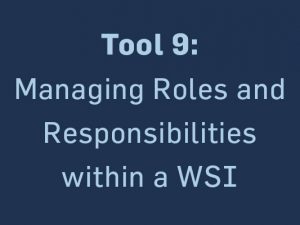| Tool | “How to” develop a Memorandum of Understanding (MoU) and an annotated outline highlighting key aspects that should be agreed to among WSI participants. |
| Related Key Activities | Assign appropriate roles and responsibilities; clarify expectations of WSI behavior. |
| Questions Addressed | How can we establish a baseline understanding related to the objectives of the WSI, level of expected performance, and intent of WSI participants? |
| Purpose | Mitigate integrity risks related to reputational issues by specifying decision-making structures, expected levels of performance, and adherence to good practice:
|
| Possible Users | WSI participants. |
| Level of Effort | Much of the work needed to successfully develop an MoU takes places in earlier phases, so the actual write-up of the MoU should be minimal. |
| WSI Phase | 2: Formalization. |
An MoU expresses a convergence of will among the parties of a WSI, indicating an intended common line of action. It is often used either where parties do not require a legal commitment or where the parties cannot create a legally enforceable agreement. Whether or not an MoU constitutes a binding contract depends on the presence of legal elements in the text such as the intention to be legally bound.
An MoU provides a reference in the event of dispute, differing interests, or undesirable behavior by a participant. It also outlines and makes transparent the decision-making structure of the initiative, thereby reducing the risk of collusion that can lead to misuse of the WSI. Given its formal character and the requirement that it be signed, the process of establishing an MoU contributes to raising awareness about the roles and responsibilities of the WSI participants. MoUs can also mitigate reputational risks to the WSI and partners by specifying certain expected levels of performance or adherence to good practice. For example, some MoUs specify participant commitment to mutually agreed codes of conduct (Tool 10b), environmental policy, or disclosure of conflicts of interest. Establishing a clear agreement can help prevent conflict and reputational harm because expectations are established at an early stage, leaving less room for misinterpretation by the participants.


